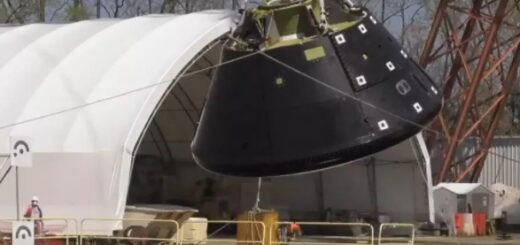Prebiotic ingredients for life found around young star

Someday the molecules may end up in a planet and become the necessary elements for life
Where did the ingredients for life on Earth come from? A team of astronomers has found a crucial new link: the observation of essential “prebiotic” molecules around a still-forming star.
Someday those molecules may end up in a planet and become the necessary elements for life.
Stepping up
One of the many distinguishing factors separating life from non-life is life’s ability to use a variety of molecular tools to store, transport and release energy. The cells in your body are a veritable chemical civilization in miniature, with DNA and RNA calling the shots, proteins working back and forth to do the grunt work and lattices of lipids to keep everything intact.
All those complex molecules rest on a few precursors, known as prebiotics. We’re not exactly sure how complex life emerged on Earth (or could emerge elsewhere in the universe), but it seems apparent that if you want to transition from not-alive to definitely-alive, you have to go through a few stages of complexity involving these precursor molecules.
For example, methyl isocyanate (CH3NCO) and glycolonitrile (HOCH2CN) are isomers of each other — they have the same fundamental elements, but those elements are arranged differently in space. They are both individually extremely hazardous to human health. Methyl isocyanate is caustic and irritating, and glycolonitrile quickly decomposes into formaldehyde and hydrogen cyanide.
While these two molecules aren’t so friendly by themselves, they play a key role in the steps to achieving lifehood. They are involved in forming peptide structures (with the peptides eventually going on to glue together to form proteins) and adenine, which is one of the four bases in the genetic code of our DNA.
Look to the light
Why am I talking so much about methyl isocyanate and glycolonitrile? Because astronomers just found evidence of these two prebiotic molecules hanging out in deep space, according to a research paper recently appearing in the preprint journal arXiv, which has been accepted for publication in the journal Astronomy and Astrophysics.
The astronomers found these pre-critters in Serpens SMM1-a and IRAS 16293B, the astronomical designations for two protostars.
Protostars are, as the name suggests, not quite stars yet. They’re still forming, collapsing from clouds of gas and dust, but have not achieved the densities and temperatures needed to trigger nuclear fusion. Observing protostars is essential for understanding how life evolves in the universe, because it’s from this proto-soup that planets eventually emerge, and to a large degree they’re born with what they get from the early protostar system.
So if we want to hunt for the origins of life, we have to look inside stellar wombs like these two.
To identify the molecules, the astronomers used a technique called spectroscopy. The protostars are at this stage just clumps of denser-than-average dust. They aren’t incredibly hot and bright, which makes observing them difficult, unless you have the world’s most powerful radio telescope at your back.
Which the astronomers did.
Using the Atacama Large Millimeter/sub-millimeter Array (ALMA) in Chile, the astronomers carefully studied the light coming from the protostars. Buried within that light was the subtle hint of all kinds of elements and molecules, each one giving off its own particular fingerprint of wavelengths. By matching the fingerprints to the known emissions from various elements, the astronomers were able to find the prebiotics.
So, fantastic: more ingredients for life have been found in a young, still-forming system. That means that if those systems develop planets, and those planets have the right conditions, then life has at least two of the essential tools it needs.
So, how did the prebiotics get there?
In the mix
Methyl isocyanate and glycolonitrile don’t just float around the universe randomly, hoping for a chance to become a part of a star system. Surveys of interstellar gas clouds have not found these prebiotic molecules, so that means that the protostar systems had to somehow cook up these molecules on their own.
The astronomers believe that, in the case of SMM1-a, it experienced a period of relative calm in the recent past, when icy dust could encircle the soon-to-be-star without melting — but also without locking up. This allowed chemical reactions to take place, as various elements traded places with each other in interesting molecular combinations.
We don’t know yet if the processes that led to the formation of these prebiotics around the protostars is common throughout the galaxy or unique to those systems. Further studies will help pin down that answer, which is just one answer among many needed to understand just how common life is in the universe.



 Creators of mankind
Creators of mankind Description of “Tall white aliens”
Description of “Tall white aliens” Where they came from?
Where they came from? About hostile civilizations
About hostile civilizations The war for the Earth
The war for the Earth “Tall white aliens” about eternal life
“Tall white aliens” about eternal life Video: “Nordic aliens”
Video: “Nordic aliens” Aliens
Aliens Alien encounters
Alien encounters The aliens base
The aliens base UFO
UFO Technology UFO
Technology UFO Underground civilization
Underground civilization Ancient alien artifacts
Ancient alien artifacts Military and UFO
Military and UFO Mysteries and hypotheses
Mysteries and hypotheses Scientific facts
Scientific facts


















